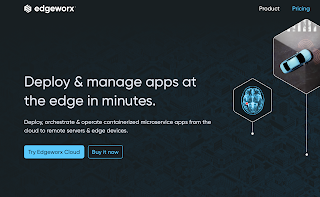The University of Bristol and Hewlett Packard Enterprise have been awarded a £225m grant by the UK government to deliver the nation’s fastest supercomputer.
To be known as Isambard-AI, it will be 10 times more powerful than the UK’s current fastest supercomputer and among the most powerful in the world when it opens at the National Composites Centre (NCC) in the summer of 2024.
Isambard-AI will be designed with cutting-edge technologies to drive AI-driven research
Hewlett Packard Enterprise (HPE) will build and deliver the new system. Isambard-AI will be based on the HPE Cray EX supercomputer, and consist of 5,448 NVIDIA GH200 Grace Hopper Superchips which combine NVIDIA’s Arm-based Grace CPU with a Hopper-based GPU optimized for power efficiency and giant-scale AI, along with the latest HPE Slingshot 11 interconnect, and nearly 25 petabytes of storage using the Cray Clusterstor E1000 optimised for AI workflows.
When in psroduction, Isambard-AI will achieve well over 200 PetaFLOP/s using the Top500’s Linpack benchmark, while also achieving over 21 ExaFLOP/s of AI performance to accelerate AI training for large-scale AI, such as large language models.
The new Bristol facility will be used by a wide range of organisations from across the UK to harness the power of AI, which is already the main driver of emerging technologies such as training large language models (LLMs), big data and robotics. The new supercomputing facility will also play a vital role in important areas such as accelerating automated drug discovery and climate research.
Justin Hotard, executive vice president and general manager, HPC, AI & Labs at HPE said: "Today's announcement of the UK’s major investment in AI supercomputing underscores its commitment to taking a global leadership position in AI. The Isambard-AI system will harness world-leading supercomputing, including high-performance networking co-developed at HPE's Bristol labs, to provide the performance and scale required for compute-intensive AI projects. We are proud to partner with the UK Government and the University of Bristol to give UK researchers and industry access to Europe's largest AI system for open science."
Ian Buck, vice president of hyperscale and HPC at NVIDIA, said: “In building one of the world's fastest AI supercomputers, the UK is demonstrating the importance for nations to create their own infrastructure. Isambard-AI will provide researchers with the same state-of-the-art AI and HPC compute resources used by the world's leading AI pioneers, enabling the UK to introduce the next wave of AIand scientific breakthroughs.”
https://www.hpe.com/us/en/newsroom/press-release/2023/11/uk-government-invests-225m-to-create-uks-most-powerful-ai-supercomputer-with-university-of-bristol-and-hewlett-packard-enterprise.html















